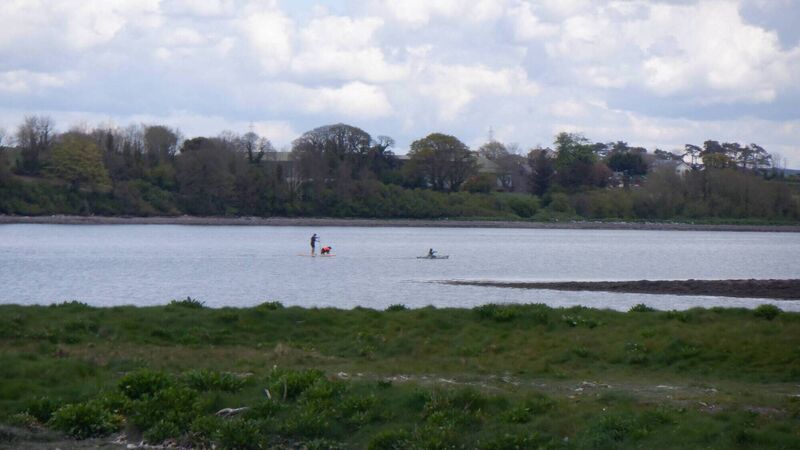Islands of Ireland: Mesolithic 'kitchen middens'

This column cannot be charged with the crime of inconsistency: last week Brown Island and this week Brown Island.
This one is not much more than a ploughed field with a cliff of boulder clay. It is tethered to the mainland by a causeway that is overwhelmed at spring tide, thus qualifying it for this series. It is a remnant of an area about five times its size that was subsumed into the mainland over time.
It is just a few kilometres from the other Brown Island, which must be a record for two islands of the same name being so close.
And tiny though it is, this seemingly inconsequential field has played a significant role in Cork prehistory — perhaps even thousands of years before St Finbarr made his way from Gougane Barra to found the city in the 6th century.
Brown Island is one of several in Cork Harbour where remnants of Mesolithic society were found. At a time when the country was largely forested, these people lived on a diet of shellfish and herbs. They left their mark in the shape of ‘kitchen middens’, which are small mounds containing the remains of their food preparation.

In 1870, archaeologist George Atkinson happened upon the shell deposits. “While enjoying a boating excursion, my attention was attracted by some white marks on the shore, which I inferred were kitchen middens, and on landing I had much pleasure in finding my conjecture to be correct. With the exception of charcoal, I found no evidence of civilisation, no split bone nor flint flake, nothing among the shells but stone pounders, varying in size.”
Radiocarbon dating at Brown Island gave a timeline of around 200BC to 300AD for the use of the middens. It is thought that, afterwards, oyster harvesting activities were moved in to the city.
In 1907 letter to this paper, the honourable secretary of the Cork Naturalist Field Club, FR Rohu, wrote of the club’s excursion to Brown Island. “In those days, of course, there was no corn, potatoes, or cereals of any kind so that the natives (whether Firbolgs or otherwise) had to live on flesh, fish, roots or molluscs. Several interesting botanical specimens were found by the excursionists.”
The deposits were about 50yd in length, and up to 5ft deep, indicating a sizeable dependant population over centuries.
Rohu explained how the “primitive mode of opening those bivalves was by chipping a piece out of the shell with a stone in a line with the hinge at the back.”
Another event that marked out Brown Island was fox hunting. The United Hunt Club frequently hunted foxes on to Brown Island in the 1930s, among them a Major and Mrs Watt and a Captain Dyke. On one occasion, according to a report, a fox was seen swimming to Brown Island, so the master took the pack around to it, but didn’t find it as it had “likely gone to ground in the sand earths”.
A less-fortunate fox, which had a bad reputation among poultry farmers, was hunted by the Midleton Harriers. The party was so engrossed in the act of killing that they failed to notice the rising tide and were marooned there. Word was sent to a “good sportsman”, Terry O’Brien, the paper recorded, who sent men and horses to get them out of their perilous position.
Jim Wilson of Harper’s Island Nature Reserve has been in touch to say that the construction of the N25 in the 1990s at the neighbouring Brown Island did, in fact, affect the birds. There was a significant loss of feeding and roosting habitats he said.
“Our work at Harper's is only very small compensation for the loss. Wetland bird numbers in Cork Harbour have declined by almost 60% in the last 50 years for many reasons, not least habitat loss, but also increased disturbance due to growing leisure activity on the water of the harbour.”
- How to get there: There is a lovely short walk to Brown Island from the South and East Cork Bird Trail at Brown Island pier, a few kilometres west of Midleton at Ballintubber West.
- Other: Deconstructing the Myths of Irish Shell Middens, Nicky Milner and Peter Woodman in 'Shell Middens in Atlantic Europe'. Oxford.










